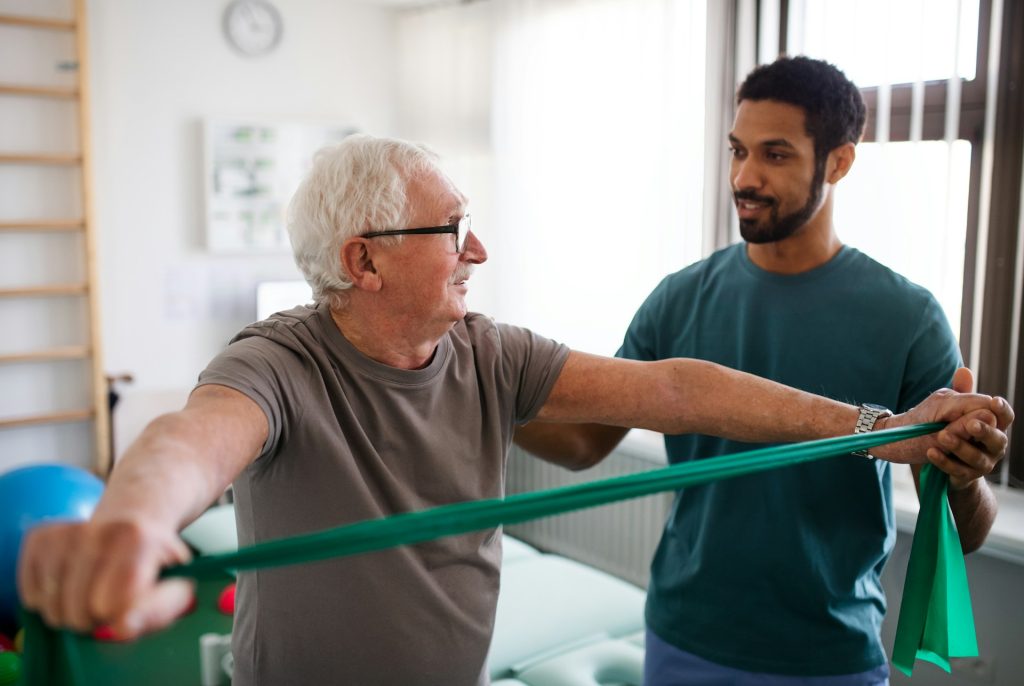If you’re struggling with lower back pain, a carefully designed exercise program can be your ally. You can relieve pain by focusing on exercises to strengthen your core and the lumbar spine. With the guidance of a specialist, you can design an individualized plan that targets your specific pain points, ensuring that the pain lasts for a shorter period and recovery is quicker.
Understanding Lower Back Pain Dynamics
Pelvic tilts can be a fundamental exercise to better address lower back pain. By learning to lift your hips off the floor correctly, you can begin to stabilize your core and alleviate pressure on your lower spine.
Pinpointing Common Causes of Lower Back Discomfort
Understanding the root of lower back discomfort often points to muscles and ligaments. Strains and sprains from overexertion or poor posture are common culprits that need targeted therapies.
Assessing Pain Location for Targeted Therapy
Identifying the exact location of your pain is crucial to an effective exercise program. Strengthening your core through specific exercises can offer relief, especially when a personalized approach is taken to design an individualized routine tailored to the pain’s length.

Alleviating Discomfort With Proven Exercises
Proven exercises to alleviate lower back discomfort often begin with lying flat on the floor, with your knees bent and your feet flat. This position is the starting point for many stretches and strengthening exercises that promote spinal alignment and pain relief.
Stretches to Enhance Flexibility and Reduce Pain
To increase flexibility and reduce pain, try floor stretches like the bird dog, extending one leg and the opposite arm while keeping knees bent. Physical therapists suggest holding stretches, such as pulling your knee to your chest for 15-30 seconds, to ease tight muscles and boost core strength.
- The Healing Powers of Knee to Chest Stretches
Knee-to-chest stretches offer a profound healing effect, gently pulling the knee towards the chest and holding it for 20 seconds. Repeating this five times is recommended to maximize the stretch in your lower back muscles.
- The Therapeutic Twists of Knee Rotations
Knee rotations can offer therapeutic benefits to those suffering from lower back stiffness. The gentle turning motion helps to relieve tension in the lumbar region.
- Easing Tension with Lower Back Rotations
Lower back rotations are excellent for easing tension. They involve lying flat on the floor and gently rotating the knees to each side, which helps to loosen up the lower back.
- The Gentle Relief of Cat/Cow Postures
The cat/cow posture, a gentle flow between arching and rounding the back, provides relief by mobilizing the spine and stretching the back muscles.
- Child’s Pose – A Restorative Stretch
The Child’s Pose is a restorative stretch that allows the back to relax and the mind to calm, making it a beneficial component of any back care routine.
Strengthening Moves for a Resilient Core
Strengthening moves for a resilient core aim to build up the lower back and core muscles, providing support and reducing the chances of future pain.
- Building Stability with Partial Crunches
Partial crunches, performed by crossing your arms and lifting your shoulders off the floor, are an effective way to build stability in the core and lower back.
- Engaging Muscles with Pelvic Tilts
Pelvic tilts engage the core muscles effectively by pulling your belly button towards the spine, a simple yet powerful movement for strengthening the lower back.
- Improving Posture with Wall Sits
Wall sits are an excellent way to improve posture and strengthen the back and leg muscles. With your back against the wall and knees bent, this exercise can fortify your core and reduce lower back strain.
- Strengthening the Hips with Targeted Stretches
For lower back pain relief, try this physical therapist-recommended hip stretch: Bend one knee and gently pull it to your chest, holding for 15-30 seconds with shoulders and hands flat on the floor and spine neutral. Switch legs after releasing. This stretch eases hip tension and strengthens the core, preventing further muscle tightness.
Advanced Physical Therapy Techniques
Advanced physical therapy for lower back pain combines traditional exercises with innovative equipment, offering relief for complex cases. Specialized tools and methods quicken recovery, improving strength and mobility.
Utilizing Equipment for Enhanced Recovery
Physical therapy equipment plays a crucial role in rehabilitation, providing targeted treatments to facilitate healing. These tools, ranging from simple resistance bands to high-tech machines, assist in precise muscle activation and support, helping patients regain function while minimizing the risk of further injury.
Foam Rolling for Muscle Relaxation
One beneficial technique is foam rolling, which aids muscle relaxation and reduces soreness. You can help release knots and improve blood flow by applying gentle pressure to tight muscles. Spend about 60 seconds on each area, moving slowly and pausing on particularly tender spots to allow the fascia to release and the muscles to relax.
Spiky Ball Glute Massage for Deep Relief
For deeper relief, a spiky ball can massage the glutes, where tension often contributes to lower back pain. Position the ball underneath your glutes and gently roll back and forth. The spikes target specific points, providing a massage that stretches the muscles and enhances circulation, offering respite from discomfort.

Stretching to Alleviate Specific Conditions
Stretching is a cornerstone of physical therapy, especially for alleviating pain from specific conditions. Tailored stretching programs can significantly improve flexibility and reduce pain, leading to a more active and comfortable life.
Addressing Piriformis Syndrome With Stretches
Piriformis syndrome, a common cause of sciatica, can be mitigated with regular stretching. It’s important to perform stretches where the stretch is felt but not to the point of pain. Aim for three sets of sustained stretches, allowing the muscle to relax and lengthen, thereby reducing the compression on the sciatic nerve.
The Relief of Hamstring Stretches for Tension Release
Hamstring stretches are another essential tool in combating lower back pain. Tight hamstrings can pull on your pelvis and exacerbate back discomfort. By stretching these muscles regularly, you can maintain their flexibility. Perform three stretches, reaching toward your toes while keeping your spine straight, to release the tension effectively.
Conclusion
To overcome lower back pain, focus on consistency and tailor exercises to your needs. Incorporate stretches, strengthening exercises, and advanced techniques into your daily routine, always listening to your body. Consult healthcare professionals for personalized care. Embrace a proactive approach and smart lifestyle choices for a more comfortable life. Stay patient and positive; relief is achievable.
